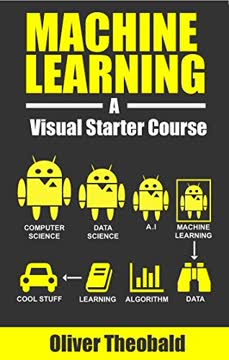Key Takeaways
1. Machine learning empowers computers to learn without explicit programming.
In his landmark paper, Arthur Samuel introduces machine learning as a subfield of computer science that gives computers the ability to learn without being explicitly programmed.
Self-learning is key. Machine learning distinguishes itself by enabling computers to learn from data without direct, step-by-step instructions. Instead of pre-defined outputs, machines analyze data, identify patterns, and improve their performance through experience. This self-learning capability allows them to adapt to new information and make predictions without constant human intervention.
Input data vs. commands. Traditional programming relies on explicit commands to produce specific outputs. Machine learning, however, uses input data to train models that can then make predictions or decisions. For example, a spam filter learns to identify spam emails by analyzing patterns in existing emails, rather than following a fixed set of rules.
Mimicking human decision-making. The process of machine learning mirrors human decision-making, where experience and pattern recognition play a crucial role. By analyzing data and identifying relationships, machines can generate outputs that are based on experience and self-learning, rather than pre-programmed instructions.
2. Supervised learning thrives on labeled data for predictive modeling.
As the first branch of machine learning, supervised learning concentrates on learning patterns from labeled datasets and decoding the relationship between input features (independent variables) and their known output (dependent variable).
Learning from examples. Supervised learning algorithms learn from labeled datasets, where both the input features and the desired output are known. This allows the algorithm to identify patterns and relationships between the inputs and outputs, and then use this knowledge to predict the output for new, unseen data.
Regression and classification. Supervised learning encompasses two main types of tasks:
- Regression: Predicting a continuous output variable, such as house prices or stock values.
- Classification: Predicting a categorical output variable, such as spam or not spam, or cat vs dog.
Model creation and testing. After training on the labeled data, the supervised learning algorithm creates a model, which is an algorithmic equation for producing an outcome with new data based on the underlying trends and rules learned from the training data. The model is then tested on a separate dataset to evaluate its accuracy and ensure that it can generalize to new data.
3. Unsupervised learning uncovers hidden patterns in unlabeled data.
In the case of unsupervised learning, the output variables are unlabeled, and combinations of input and output variables are consequently unknown.
Discovering hidden structures. Unsupervised learning algorithms work with unlabeled data, where the desired output is not known. Instead, the algorithm focuses on identifying patterns, relationships, and structures within the data itself. This can be used to discover new insights, segment data, or reduce the dimensionality of the data.
Clustering and dimensionality reduction. Two common techniques in unsupervised learning are:
- Clustering: Grouping similar data points together based on their characteristics.
- Dimensionality reduction: Reducing the number of variables in a dataset while preserving its essential information.
Fraud detection example. Unsupervised learning is particularly useful in fraud detection, where the goal is to identify unusual patterns or anomalies that may indicate fraudulent activity. By analyzing patterns across millions of accounts, unsupervised learning can identify suspicious connections between users without knowing the specific category of future attacks.
4. Reinforcement learning achieves goals through trial, error, and feedback.
Reinforcement learning is the third and most advanced category of machine learning.
Learning through interaction. Reinforcement learning algorithms learn by interacting with an environment and receiving feedback in the form of rewards or penalties. The goal is to learn a policy that maximizes the cumulative reward over time.
Video game analogy. Reinforcement learning can be understood through the analogy of a video game, where the player learns the value of various actions under different conditions and gradually improves their performance based on learning and experience.
Q-learning example. Q-learning is a specific reinforcement learning algorithm where the machine learns to match the action for a given state that generates or preserves the highest level of Q. It learns initially through the process of random movements (actions) under different conditions (states), recording its results (rewards and penalties) and how they impact its Q level to inform and optimize its future actions.
5. Data scrubbing is essential for refining datasets and improving model accuracy.
For data practitioners, data scrubbing typically demands the greatest application of time and effort.
Cleaning and preparing data. Data scrubbing is the process of refining a dataset to make it more workable. This involves modifying and removing incomplete, incorrectly formatted, irrelevant, or duplicated data. It may also entail converting text-based data to numeric values and redesigning features.
Feature selection and reduction. To generate the best results from your data, it’s essential to first identify the variables most relevant to your hypothesis. This might involve deleting irrelevant columns, merging multiple features into one, or reducing the number of rows by merging similar data points.
One-hot encoding and binning. One-hot encoding transforms categorical values into binary form, represented as "1" or "0." Binning converts numeric values into categories, which can be useful in situations where the exact measurements are less important than the general category.
6. Proper data setup, including split and cross-validation, is crucial for model generalization.
After cleaning your dataset, the next job is to split the data into two segments for training and testing, known as split validation.
Training and testing data. After cleaning the dataset, it's essential to split the data into two segments: training data and test data. The training data is used to develop the model, while the test data is used to evaluate its accuracy. A typical split ratio is 70/30 or 80/20.
Randomization and bias prevention. Before splitting the data, it’s essential to randomize all rows in the dataset. This helps to avoid bias in your model, as your original dataset might be arranged alphabetically or sequentially depending on the time it was collected.
Cross-validation for robust models. Cross-validation maximizes the availability of training data by splitting data into various combinations and testing each specific combination. This helps to ensure that the model can generalize to new data and avoid overfitting to the training data.
7. Regression analysis quantifies relationships between variables for prediction.
As the “Hello World” of machine learning algorithms, regression analysis is a simple supervised learning technique for finding the best trendline to describe underlying patterns in the data.
Finding the best fit. Regression analysis is a supervised learning technique for finding the best trendline to describe underlying patterns in the data. Linear regression generates a straight line to describe a dataset, while logistic regression is used to predict discrete variables.
Linear regression and hyperplanes. Linear regression finds a straight line (hyperplane) that best splits your data points on a scatterplot. The goal is to minimize the distance between the regression line and all data points on the scatterplot.
Logistic regression for classification. Logistic regression is used to predict discrete categorical variables, such as "spam" or "not spam." It uses the sigmoid function to find the probability of independent variables producing a discrete dependent variable.
8. Clustering groups data points based on similarity for pattern discovery.
A company, for example, might wish to examine a segment of customers that purchase at the same time of the year and discern what factors influence their purchasing behavior.
Identifying similar groups. Clustering analysis groups data points that share similar attributes. This can be used to identify customer segments, detect fraud, or perform image processing.
K-nearest neighbors (k-NN). K-NN is a supervised learning technique used to classify new data points based on their position to nearby data points. It classifies a new data point based on the majority class among its k-nearest neighbors.
K-means clustering. K-means clustering is an unsupervised learning algorithm that divides data into k number of discrete groups. It works by first splitting data into k number of clusters and then iteratively assigning data points to the closest centroid and updating the centroid coordinates.
9. Bias and variance must be balanced to optimize model performance.
A constant challenge in machine learning is navigating underfitting and overfitting, which describe how closely your model follows the actual patterns of the data.
Understanding bias and variance. Bias refers to the gap between the value predicted by your model and the actual value of the data. Variance describes how scattered your predicted values are in relation to each other.
Underfitting and overfitting. Underfitting occurs when the model is too simple and cannot capture the underlying patterns in the data. Overfitting occurs when the model is too complex and learns the noise in the data, leading to poor generalization performance.
Bias-variance trade-off. There is often a trade-off between bias and variance. Reducing bias may increase variance, and vice versa. The goal is to find an optimal balance that minimizes the overall prediction error.
10. Artificial neural networks process data through layers of interconnected nodes.
Artificial neural networks, also known as neural networks, is a popular technique in machine learning to process data through layers of analysis.
Inspired by the human brain. Artificial neural networks (ANNs) are inspired by the structure of the human brain. They consist of interconnected nodes (neurons) that process data through layers of analysis.
Nodes, edges, and activation functions. In a neural network, nodes are stacked up in layers and connected by edges. Each edge has a numeric weight, and if the sum of the connected edges satisfies a set threshold (activation function), this activates a neuron at the next layer.
Deep learning and complex patterns. As more hidden layers are added to the network, the model’s capacity to analyze complex patterns increases. This is why neural networks with many layers is often referred to as deep learning.
11. Decision trees provide transparent classification and regression models.
Decision trees not only break down and explain how classification or regression is formulated but also produce a neat visual flowchart you can share and show to others.
Visual and interpretable models. Decision trees are supervised learning techniques used for both classification and regression problems. They provide a visual flowchart that explains how the model makes decisions, making them easy to interpret and understand.
Recursive partitioning and entropy. Decision trees analyze data by first splitting data into two groups. This binary splitting process is then repeated at each branch (layer). The aim is to select a binary question that best splits the data into two homogenous groups at each branch of the tree, such that it minimizes the level of data entropy at the next.
Random forests and boosting. Random forests construct multiple decision trees and combine their predictions to select an optimal path of classification or prediction. Boosting algorithms convert "weak learners" to "strong learners" by adding weights to iterations that were misclassified in earlier rounds.
12. Ensemble modeling combines multiple algorithms for enhanced prediction accuracy.
One of the most effective machine learning methodologies today is ensemble modeling, also known as ensembles.
Combining diverse models. Ensemble modeling combines multiple algorithms to create models that produce a unified prediction. This can improve prediction accuracy and robustness compared to using a single algorithm.
Bagging, boosting, and stacking. Four popular subcategories of ensemble modeling are:
- Bagging: Randomly drawn data and combines predictions to design a unified model based on a voting process among the training data.
- Boosting: Addresses error and data misclassified by the previous iteration to form a final model.
- A bucket of models: Trains numerous different algorithmic models using the same training data and then picks the one that performed most accurately on the test data.
- Stacking: Runs multiple models simultaneously on the data and combines those results to produce a final model.
Accuracy vs. simplicity. Although ensemble models typically produce more accurate predictions, one drawback to this methodology is, in fact, the level of sophistication. The transparency and simplicity of a simple technique, such as decision trees or k-nearest neighbors, is lost.
Last updated:
FAQ
What is "Machine Learning For Absolute Beginners" by Oliver Theobald about?
- Plain English Introduction: The book provides a straightforward, jargon-free introduction to machine learning, making it accessible for readers with little to no background in the field.
- Step-by-Step Fundamentals: It covers the core concepts, categories, and algorithms of machine learning, focusing on high-level understanding before diving into technical details.
- Practical Approach: Theobald emphasizes practical application, including data preparation, model building, and evaluation, with hands-on examples using Python.
- Target Audience: It is designed for absolute beginners, including those without prior experience in programming, statistics, or mathematics, but encourages further learning in these areas.
Why should I read "Machine Learning For Absolute Beginners" by Oliver Theobald?
- Beginner-Friendly Structure: The book is tailored for readers who are new to machine learning, avoiding overwhelming technical jargon and complex math.
- Comprehensive Overview: It covers the essential building blocks of machine learning, from data scrubbing to model optimization, providing a solid foundation for further study.
- Practical Coding Examples: Readers are guided through real-world coding exercises in Python, making abstract concepts tangible and actionable.
- Career Relevance: The book highlights the growing demand for data scientists and machine learning engineers, making it a valuable starting point for those considering a career in the field.
What are the key takeaways from "Machine Learning For Absolute Beginners" by Oliver Theobald?
- Understanding Machine Learning: Readers will grasp what machine learning is, how it differs from traditional programming, and its relationship to fields like data mining and artificial intelligence.
- Core Categories and Algorithms: The book explains supervised, unsupervised, and reinforcement learning, along with key algorithms such as regression, clustering, decision trees, and neural networks.
- Data Preparation Importance: Emphasis is placed on the critical role of data scrubbing, feature selection, and handling missing data in building effective models.
- Model Evaluation and Optimization: Theobald teaches how to split data, validate models, and optimize hyperparameters to avoid common pitfalls like overfitting and underfitting.
How does Oliver Theobald define machine learning in "Machine Learning For Absolute Beginners"?
- Learning Without Explicit Programming: Machine learning is defined as a subfield of computer science that gives computers the ability to learn from data without being explicitly programmed for specific tasks.
- Self-Learning Capability: The book highlights the concept of self-learning, where machines detect patterns and improve performance based on empirical data.
- Input Data vs. Input Command: Theobald distinguishes between traditional programming (input command) and machine learning (input data), where the latter allows the machine to form models and make predictions.
- Analogy to Human Learning: The process is likened to training a guide dog, where the model learns from experience and can make decisions in new situations.
What are the main categories of machine learning explained in "Machine Learning For Absolute Beginners"?
- Supervised Learning: Focuses on learning from labeled datasets, where the relationship between input features and known outputs is established to make predictions.
- Unsupervised Learning: Deals with unlabeled data, aiming to uncover hidden patterns or groupings without predefined outputs, such as clustering customers by behavior.
- Reinforcement Learning: Involves learning through trial and error, where models receive feedback (rewards or penalties) to optimize decision-making over time.
- Practical Examples: The book provides real-world scenarios for each category, such as spam detection (supervised), fraud detection (unsupervised), and game playing (reinforcement).
How does "Machine Learning For Absolute Beginners" by Oliver Theobald explain the process of preparing and scrubbing data?
- Data Scrubbing Importance: Theobald stresses that cleaning and refining data is often the most time-consuming and crucial step in machine learning.
- Feature Selection and Compression: The book covers selecting relevant variables, merging features, and reducing dataset complexity to improve model accuracy and efficiency.
- Handling Non-Numeric and Missing Data: Techniques like one-hot encoding for categorical variables and strategies for dealing with missing values (using mode, median, or row removal) are explained.
- Binning and Row Compression: Theobald introduces binning (converting numeric values to categories) and row compression (merging similar rows) as additional data preparation methods.
What is the "machine learning toolbox" according to Oliver Theobald in "Machine Learning For Absolute Beginners"?
- Three Main Compartments: The toolbox consists of data (structured and unstructured), infrastructure (programming languages, libraries, and computing resources), and algorithms (various machine learning techniques).
- Beginner vs. Advanced Tools: Beginners start with small, structured datasets and basic algorithms, while advanced users handle big data, distributed computing, and deep learning frameworks.
- Key Libraries and Languages: Python is recommended for its ease of use and compatibility with libraries like NumPy, Pandas, and Scikit-learn; alternatives like R, MATLAB, and C++ are also discussed.
- Visualization Tools: The importance of data visualization (using tools like Tableau, Seaborn, and Matplotlib) for communicating results is emphasized.
How does "Machine Learning For Absolute Beginners" by Oliver Theobald explain regression analysis and classification?
- Linear Regression: Introduced as the "Hello World" of machine learning, linear regression finds the best-fit line to describe relationships between continuous variables.
- Logistic Regression: Used for classification tasks with discrete outcomes, logistic regression employs the sigmoid function to assign probabilities and classify data points.
- Support Vector Machines (SVM): SVMs are presented as advanced classifiers that maximize the margin between classes, offering robustness against anomalies and high-dimensional data.
- Practical Calculation Examples: The book provides step-by-step examples and code snippets for implementing these algorithms in Python.
What are clustering techniques and how are they described in "Machine Learning For Absolute Beginners" by Oliver Theobald?
- k-Nearest Neighbors (k-NN): A supervised learning algorithm that classifies new data points based on the majority class among their nearest neighbors.
- k-Means Clustering: An unsupervised technique that partitions data into k clusters by iteratively updating centroids and assigning data points based on proximity.
- Setting the Right k: Theobald discusses methods for choosing the optimal number of clusters, including scree plots and domain knowledge.
- Applications: Clustering is shown to be useful in market segmentation, fraud detection, and pattern recognition.
How does "Machine Learning For Absolute Beginners" by Oliver Theobald address bias, variance, and model evaluation?
- Bias-Variance Trade-Off: The book explains the balance between bias (error from incorrect assumptions) and variance (error from sensitivity to fluctuations in the training set).
- Underfitting and Overfitting: Visual examples illustrate how models can be too simple (underfitting) or too complex (overfitting), affecting prediction accuracy.
- Hyperparameter Tuning: Adjusting algorithm settings is recommended to find the optimal balance and improve model generalization.
- Cross Validation: Techniques like k-fold validation are introduced to maximize data usage and minimize prediction error.
What are artificial neural networks and how are they introduced in "Machine Learning For Absolute Beginners" by Oliver Theobald?
- Inspired by the Brain: Neural networks are modeled after the structure of human neurons, processing data through interconnected nodes and layers.
- Feed-Forward and Perceptrons: The book explains basic architectures like feed-forward networks and perceptrons, including how weights and activation functions work.
- Deep Learning: More complex networks with multiple hidden layers (deep learning) are discussed, highlighting their power in tasks like image and speech recognition.
- Black-Box Dilemma: Theobald notes that while neural networks can achieve high accuracy, their decision-making process is often opaque compared to models like decision trees.
What practical advice and coding guidance does "Machine Learning For Absolute Beginners" by Oliver Theobald offer for building models in Python?
- Step-by-Step Model Building: The book walks readers through importing libraries, loading and scrubbing data, splitting datasets, selecting algorithms, and evaluating results using Python and Jupyter Notebook.
- Gradient Boosting Example: A full example is provided for building a house price prediction model using gradient boosting, including code for hyperparameter tuning and grid search.
- Emphasis on Experimentation: Readers are encouraged to modify features and hyperparameters, observe their effects, and use tools like grid search for optimization.
- Resource Recommendations: Theobald points to further resources, datasets, and online courses for continued learning and practice.
Review Summary
Machine Learning For Absolute Beginners is praised for its clarity and accessibility, serving as an excellent introduction to machine learning concepts. Readers appreciate its straightforward language, practical examples, and hands-on approach. The book is commended for demystifying complex topics and providing a solid foundation for beginners. While some found certain sections challenging, most agree it's a valuable resource for those new to machine learning. Reviewers highlight its effectiveness in explaining key concepts and bridging knowledge gaps, making it a recommended starting point for those interested in the field.
Similar Books



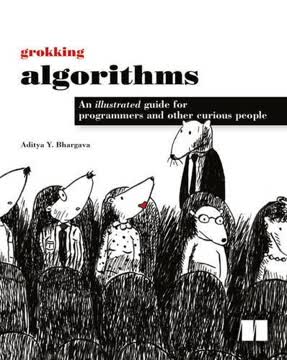

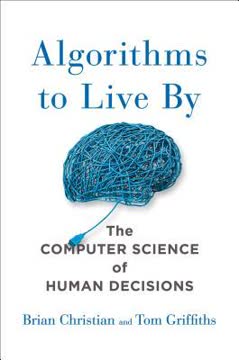
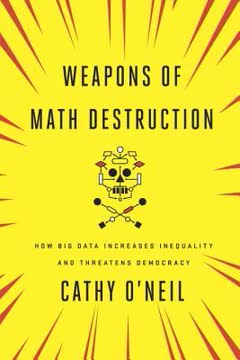
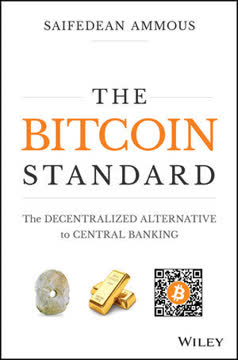
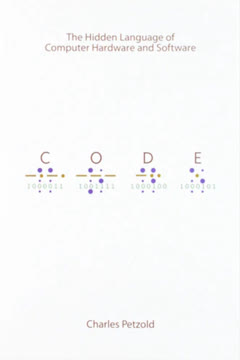
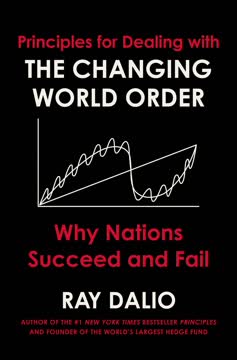
Download PDF
Download EPUB
.epub digital book format is ideal for reading ebooks on phones, tablets, and e-readers.
